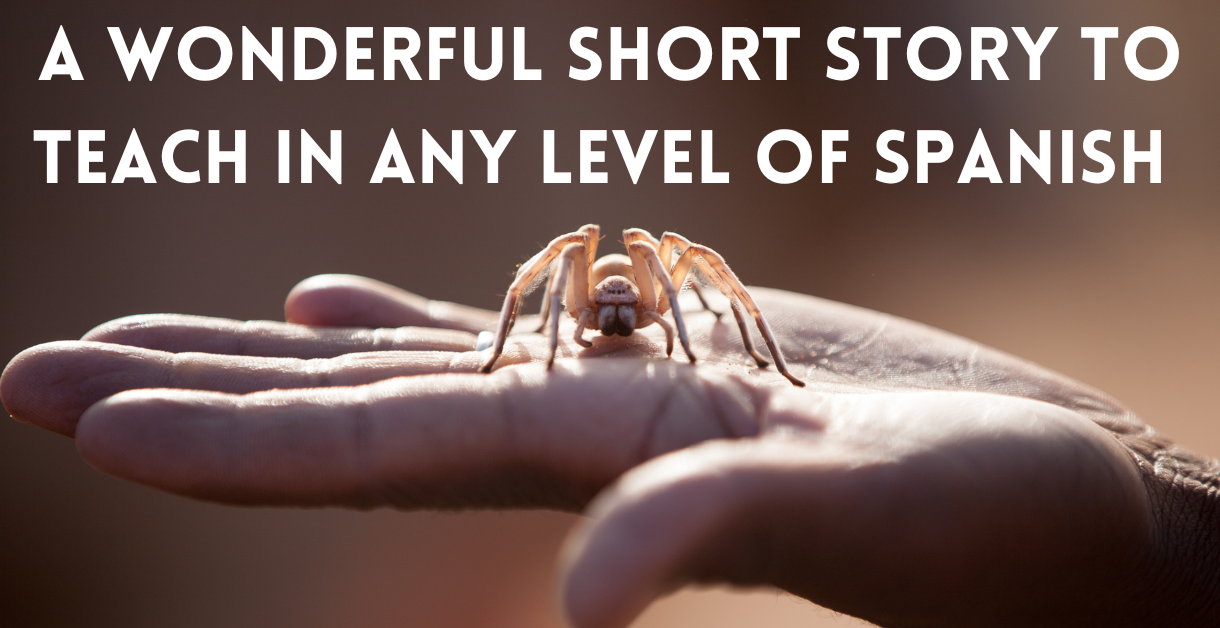Doing this activity can be done in a homeschool coop or by a child alone at home. Reading literature is a huge reward of studying a new language. Don’t put this type of activity off for too long because you are scared your child (or you!) won’t understand every word. Even having a general idea is progress. And the memory work is invaluable. Have fun!
Here is why I like it so much:
- • The story is short! A total of just seventy-nine words.
• The story is both very simple and very rich.
• The verbal forms used are mostly the preterite, with just one imperfect verb (era) and one imperfect subjunctive (quisiera) making a polite request.
• There is a lot of dialogue in the story, which makes the story more accessible.
• The ending is a complete surprise, which offers readers a chance to think (and smile!).
 Here is how I teach it:
Here is how I teach it:
- • Day One. Have your child or students read the story for homework, looking up any words that they might not know. Do let them know beforehand that “La araña” means “The spider.”
• Give them these questions to answer:
o ¿Te gustan las arañas? (Do you like spiders?) Yes! or No!
o ¿Qué le dice el narrador y cómo responde la araña? (What does the narrator say and how does the spider respond?) The narrator says the spider should leave! The spider says the same thing back to the narrator!
o Al final, es obvio que hay un conflicto sin una resolución fácil. Entonces, ¿qué decide hacer el narrador? (At the end, there is clearly a conflict with no easy resolution. What does the narrator decide to do?) The narrator takes off, leaving a hand to the spider – subject to interpretation! --- Literal? A dream? Impossible? Possible? Fantasy? No right answer here!
• Now, comes the fun. Your child (student) is going to memorize the entire story. I recommend memorizing one section each day. There are five little sections! So, let them take up to a week to get ready. Have them recite each new section to you, day by day, as they master it. Encourage them to be dramatic. Encourage them to keep their vowel sounds nice and crisp.
• Show time! Have all your students (or just your own child) recite the story from memory. Film them. Have them watch it over and over.
You will be amazed how long this story will stay in one’s memory. There is a girl who graduated from my school over twenty years ago. Every time she is back on campus, she finds me and recites “La araña”! We often say it together in unison.
We would like to thank our friends at Breaking the Barrier for sharing with us today. For your added convenience, you can read the La araña story here.
![]() John Conner is the Founder, Author and Series Editor of the Breaking the Barrier series and has taught Spanish for 40+ years. Breaking the Barrier provides a print/digital curriculum that serves the needs of a variety of homeschool learners in different settings. Homeschoolers across the country have embraced Breaking the Barrier for its standards-based curriculum for middle and high school students who earn course credits. Learners can access native Spanish-speaking conversation coaches through a mobile phone app providing invaluable on-demand live speaking and listening practice.
John Conner is the Founder, Author and Series Editor of the Breaking the Barrier series and has taught Spanish for 40+ years. Breaking the Barrier provides a print/digital curriculum that serves the needs of a variety of homeschool learners in different settings. Homeschoolers across the country have embraced Breaking the Barrier for its standards-based curriculum for middle and high school students who earn course credits. Learners can access native Spanish-speaking conversation coaches through a mobile phone app providing invaluable on-demand live speaking and listening practice.
Save up to 20% plus get SmartPoints when you purchase Breaking the Barrier curriculum at the Homeschool Buyers Club!


